Posted by Olivia Ewing on 27th Jun 2022
View Post
JULY'S BLOOD- RED BIRTHSTONE
July’s birthstone, the ruby, is a long-favored gemstone that is beloved throughout the globe. From necklaces to earrings to rings and more, the ruby has adorned serious celebrities, royals, and Joe Schmo’s alike. But what actually gives the ruby its stunning color and why do people seem to be drawn like moths to a flame to the stone? We broke it all down for you, so read on to discover all there is to know about July’s stunning birthstone!

WHAT IS A RUBY?
The ruby is a precious gemstone that is known throughout the world for its vibrant and brilliant hues that range in color from pink-red to blood-red. Alongside sapphires, they are a variety of the corundum crystal which is a crystallized version of aluminum oxide.
Rubies have traditionally been considered quite precious and are categorized alongside amethysts, sapphires, diamonds, and emeralds as a cardinal gem. They are also among the most expensive gems available, with some rare specimens fetching more than $100 million at auctions!
HOW ARE RUBIES FORMED?
The ruby you hold in your hand today stretches back about 20-30 million years to the Oligocene epoch. At that time, modern-day rubies were formed under immense heat and pressure deep within the earth. The intense conditions led to the creation of colorless corundum. Eventually, some aluminum atoms within the corundum were replaced by chromium—a rare element found in most other gems as well. When combined, chromium and corundum produce the ruby we know and love today.
A RUBY ISN’T A RUBY WITHOUT ITS RED COLOR
Rubies are so synonymous with the color red that we utilized the gemstone's name to describe the particular shade of red it encapsulates. From ruby red shirts to shoes (here’s looking at you, Dorothy) to hair, rubies are used in all types of products because of their striking hue. But what exactly gives them their signature color?
The answer lies in a process called chromium substitution, which we briefly mentioned above. When chromium interacts with iron oxide, which makes up most of a ruby's composition, it creates an intense red hue that cannot be replicated by any other gemstone—and it's what makes rubies so unique!
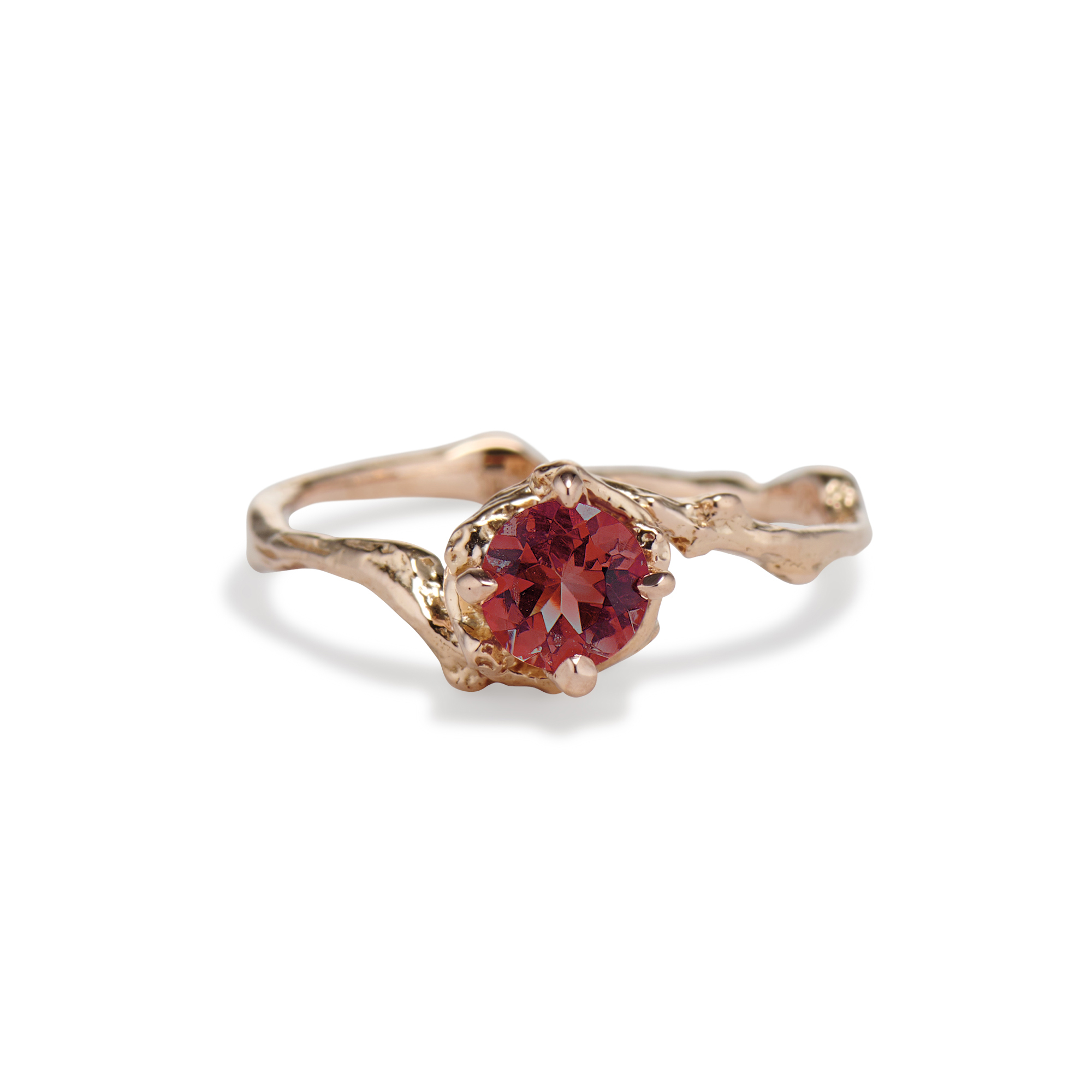
IS RUBY MINING BAD FOR THE ENVIRONMENT?
When looking to purchase a ruby you should then always be aware of how ethically it was obtained. Like diamonds, rubies are mined from the earth by a process called open-pit mining. This involves drilling boreholes into the earth, then blasting away at the rock with explosives and removing it with trucks. The remaining soil is then processed to extract the rubies that have been embedded in it. As such, there is an inherent risk of environmental and community damage via land degradation and water contamination, you are explosively blasting away rock after all.
At Olivia Ewing Jewelry, all of our rubies are ethically sourced through trusted gemstone suppliers. As a result, you can feel confident that your bold ruby is as ethical as it is beautiful.
WHAT MAKES A STUNNING RUBY?
There is no standardized grading system for rubies, however, there are a few things to keep in mind when evaluating a ruby.
COLOR
A ruby’s color is often considered the single most important quality of the ruby. In fact, the name ruby actually comes from the Latin, rubens, which translates to red. (Yep, when we call a shade of red - ruby red, what we’re actually calling it is red-red.)
Ruby’s maintain a wide range of red colors and can be found in everything from blackish-red to pinkish and orange-red hues. Luckily, the Gemresearch Swisslab AG (GRS) created a scale based on the intensity of red in rubies. The scale contains five different categories: Intense, Intense to Vivid, Vivid, Vivid to Deep, and Deep. Intense to Vivid and Vivid to Deep are both transitional categories, rubies placed here maintain qualities in both intensity and vividness while Intense, Vivid, and Deep are solely their one shade of red.
PIGEON-BLOOD RUBIES
Pure-red rubies are often called pigeon-blood rubies. The name developed thanks to an old Burmese saying that a ruby’s color should “be the same color as the first two drops of blood from the nose of a killed pigeon”. Pigeon-blood rubies are considered a Vivid to Deep ruby with a glowing fluorescence and are thought to be the most valuable color of ruby thanks to their intense tones and high saturation.
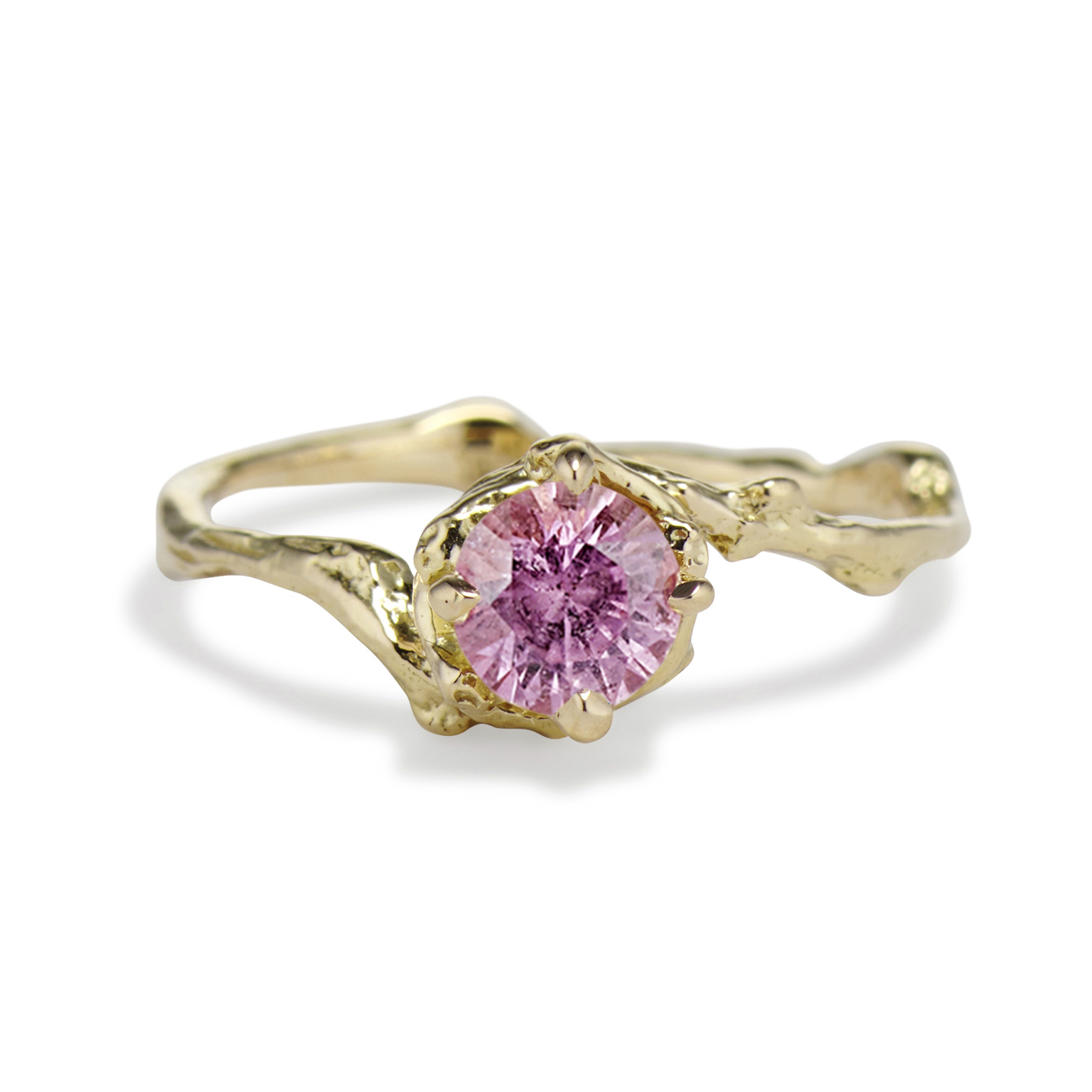
PINK SAPPHIRES VS RUBIES
As mentioned above, rubies and pink sapphires share the same chemical makeup of the other. In fact, the only differentiating factor is color, rubies are always red.
This gets a little tricky when you consider the shade of pink as pink can be considered its own color and also a shade of red. Much of the time, the distinction between pink sapphire and pink-red ruby comes down to cultural interpretive differences. North America follows GIA guidelines when it comes to this, and identifies a ruby as any corundum with red as its dominant hue. As such, we identify pink corundum as pink sapphires.
CUT
In addition to color, the cut of a ruby is an important factor in determining its overall value. The cut of a ruby refers to how the stone was polished and shaped. The cut can have a significant effect on the stone's appearance and beauty, and it can also affect its durability and ability to retain color. A well-cut ruby will have high brilliance, or shine, and will exhibit strong light return and dispersion.
TYPES OF RUBY CUTS
Rubies are a variety of corundum, and they benefit from a variety of cutting techniques that allow for maximum brilliance and depth of color. Additionally, different cuts are utilized for different applications. We've highlighted the most popular cuts below:
STEP
A step cut, aka emerald cut, utilizes parallel facets arranged on all four sides of the stone. A step cut allows a relatively unobscured view into the ruby and highlights the ruby's inherent color and clarity.
BRILLIANT
Like diamonds, a ruby can also be cut brilliantly. This type of cut focuses on the ruby's natural sparkle and usually incorporates around 58 triangular facets.
MIXED
A mixed-cut ruby employs both brilliant and step-cut techniques. This form of cutting is regularly employed for fine jewelry as it prioritizes color, shine, and clarity.
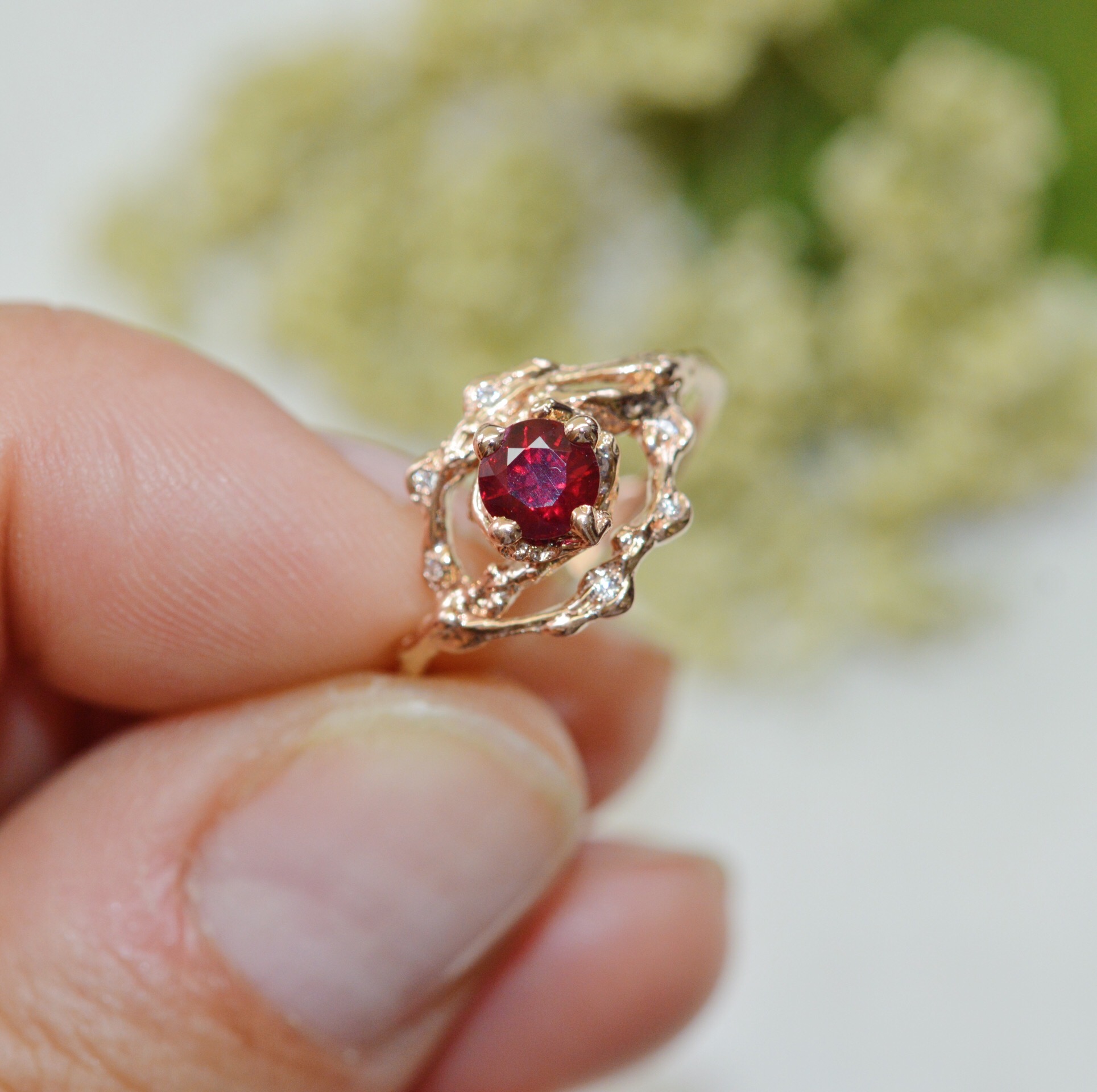
CLARITY
Much like emeralds, completely clear rubies are pretty much nonexistent so some inclusions are to be expected or even desired. What’s more, certain types of inclusions can actually complement the overall appearance of the ruby.
Needles are a common ruby inclusion. When the needles are arranged in intersecting groups and the mineral is rutile silk, they are also called silk. Rutile silk is able to help the appearance of the ruby by adding softness to otherwise dark colors and can spread the color more evenly across the surface. Needles can also intersect and produce what is known as asterism which produces a brilliant star effect when the ruby is cut cabochon style.
CARAT
Rubies that have over one carat are exceedingly rare. However, lab-created rubies are able to produce larger and larger carats of rubies while maintaining the same chemical and physical characteristics as naturally mined rubies.
WHAT ARE THE HISTORY AND THE SPIRITUAL BELIEFS ABOUT THE RUBY?
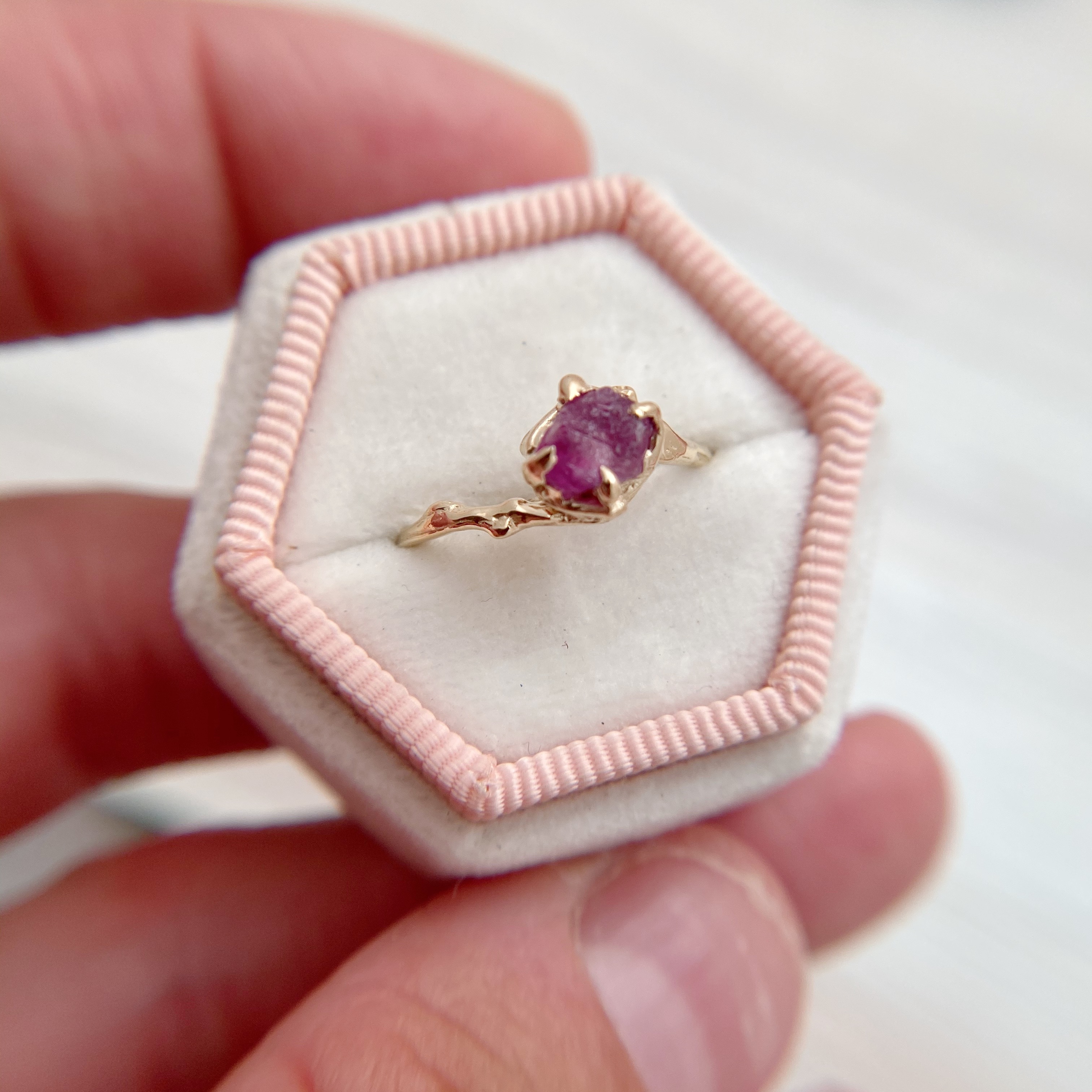
The ruby has a long and storied history that is nearly as colorful as itself. The first recorded finding of a ruby dates back all the way to 2500 BC in the Mogok region of Myanmar thanks to the discovery of tools from the stone age. Since then, ancient and modern cultures have continued to ascribe power, meaning, and value to this precious gem.
CHINA
The ruby is a powerful and highly valued stone in ancient Chinese culture. The Chinese believed that rubies had the power to bring good fortune, success, and wealth to those who wore or owned them. It was also believed that rubies could help ward off evil spirits and cure illness.
Chinese warriors were said to adorn their swords and armor with rubies to enhance its protective power and buried rubies under buildings to maintain good fortune. One Yuan dynasty Emporer, Kublai Khan, tried to trade an entire city for a particularly large ruby.
INDIA
In Ancient India the Sanskrit word for ruby was ratnaraj which translates to “king of precious stones”. Rubies, they believed, were brought to earth by the gods and could be used as a cure for snake venom and protection from evil spirits.
In Hinduism, rubies were offered to the god Krishna, believing that in exchange, they would become emperors in their next life.
GREECE
Ancient Greeks actually assigned sexes to rubies. According to the ancient Greek philosopher, Theophrastus, male rubies were darker and more brilliant than female rubies.
MEDIEVAL EUROPE
The ruby has long been associated with spirituality and faith. Medieval Europeans believed that the red color of this gemstone represented the blood of Christ, and they were often used as holy relics in churches. Additionally, the ruby was worn to guarantee health, wealth, wisdom, and passion in love.
WHAT ARE MODERN-DAY SPIRITUAL BELIEFS ABOUT THE RUBY?
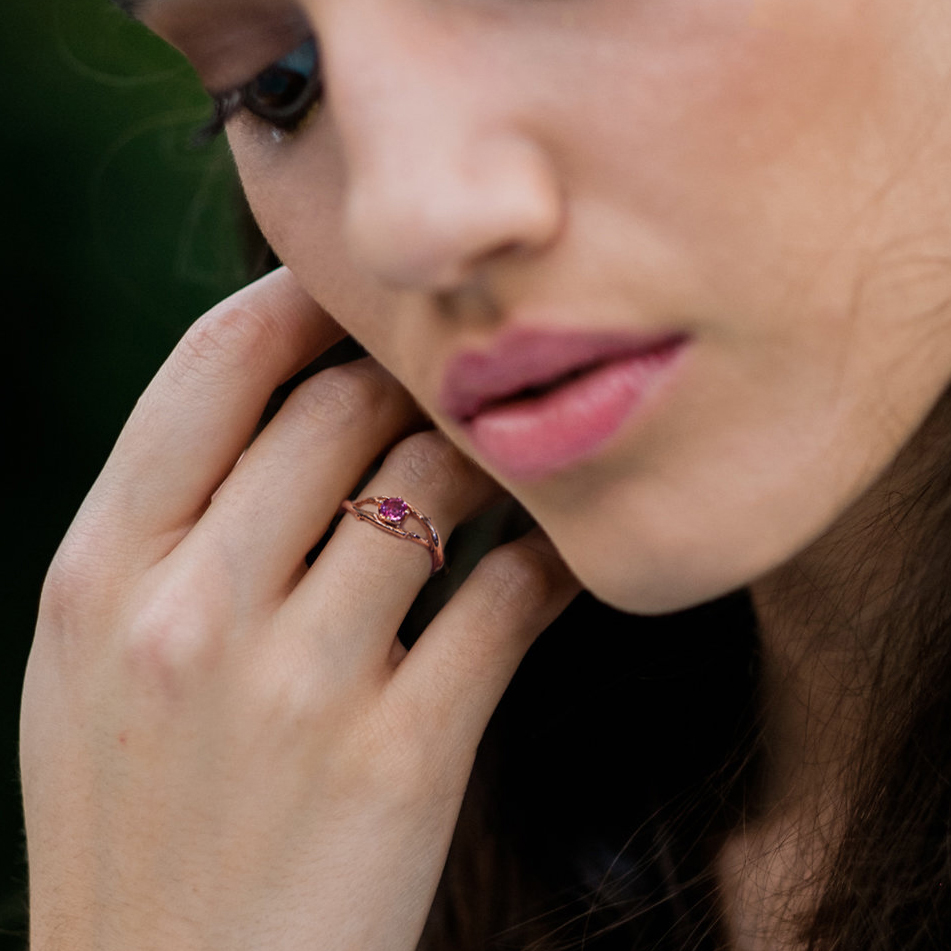
Today, the ruby is believed to be a symbol of love, passion, and commitment. It is also said to be an aid in healing the heart chakra and opening the heart to love. It's believed that wearing a ruby will help one avoid envy, greed, and jealousy. It's also believed that it can protect against negative energy and evil spirits. In addition to its protective qualities, it's also said that rubies are powerful stones for enhancing the intellect and promoting mental clarity.
From the Prehistory Era to today the ruby has long symbolized fiery passion, wisdom, protection, and wealth. If you’re looking to conjure any of the ruby's many positive effects reach out to us. We can create a handcrafted and stunning ruby ring that is sure to dazzle, delight, and invoke your inner power. Looking for inspiration? Check out our ruby rings!
Meet the Author: Olivia Ewing



